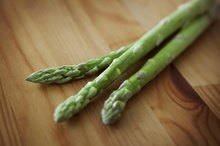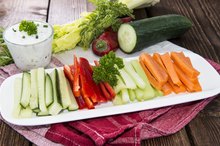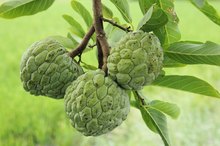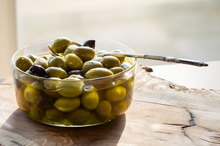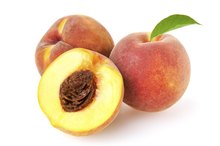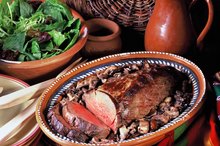Nutritional Value of Dolmades
Dolmades, also commonly called dolmas or stuffed grape leaves, are a traditional Middle Eastern dish. Including dolmades in your diet provides you with a range of nutritional value, including carbohydrates, vitamins and polyphenols, and they are quite low in calories and fat, making them appropriate for a reduced-calorie, low-fat diet.
About Dolmades
Dolmades are commonly made by mixing herbs, aromatic vegetables such as onion, and pine nuts with rice. Mound the filling into the center of a large grape leaf and roll it into a small, oblong bundle that is roughly the size and shape of your thumb. Simmer it in olive oil, lemon juice and chicken stock until cooked through. You can purchase grape leaves in jars at your local grocery store, or you can replce the grape leaves with some other leaf -- lettuce, for instance. You can also find jars of ready-made dolmades.
Basic Nutrition
Vitamin K in Green Beans and Apples
Learn More
A one-piece serving of dolmade contains 35 calories and 1 gram of fat, although this quantity may increase if the dolmades are marinated in olive oil. The calorie and fat content may also vary depending on the ingredients used as well as the ratio of rice to other ingredients. One dolmade is not a good source of protein, but you do take in 6 grams of carbohydrates, which is a small portion of the 130 grams you should consume daily. Each piece is relatively low in sodium, containing 60 milligrams.
Vitamins and Minerals
Consume one dolmade, and you take in 2 percent of the vitamin A your body requires each day. The vitamin A available in this Middle Eastern food provides benefits for your eyes, teeth and skin. You also get 2 percent of the daily recommended intake of vitamin C in a serving of dolmades. Vitamin C benefits your blood vessels, tendons and skin. This vitamin is also important for wound healing.
Polyphenols
How Many Calories in Carrot Sticks?
Learn More
Eating dolmades may provide you with polyphenols, which are antioxidants that can improve your risk of cardiovascular problems, and they may also play a role in decreasing your chances of developing cancer and neurological problems, although human clinical trials are needed to confirm those findings. A study published in the September 2011 issue of the "Journal of Agricultural and Food Chemistry" says that grape leaves are a source of polyphenols.
Related Articles
References
Resources
Writer Bio
Nicki Wolf has been writing health and human interest articles since 1986. Her work has been published at various cooking and nutrition websites. Wolf has an extensive background in medical/nutrition writing and online content development in the nonprofit arena. She graduated with a Bachelor of Arts in English from Temple University.
